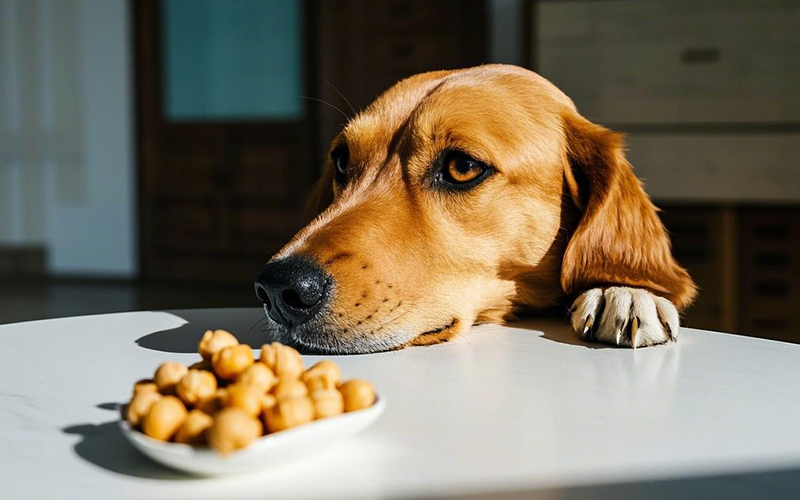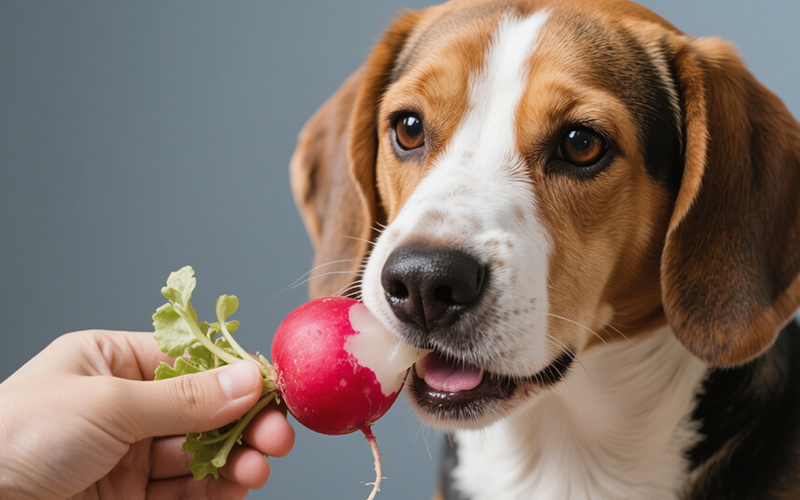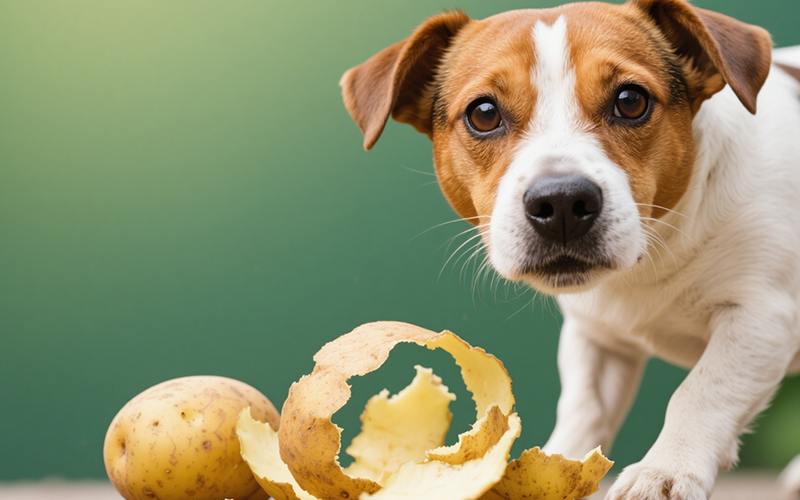Can Dogs Eat Garbanzo Beans? The Benefits and Risks of Garbanzo Beans for Dogs
- 13 Mar 2025 11:29
Garbanzo beans, also known as chickpeas, are a popular ingredient in many human dishes, from hummus to salads. But if you're a dog owner who enjoys sharing healthy food with your furry friend, you may be wondering: Can dogs eat garbanzo beans? The answer is generally yes, but with some important caveats. While garbanzo beans can be a nutritious snack for your dog in moderation, there are certain things you need to keep in mind to ensure they're safe and healthy for your pet.
In this article, we'll dive into the nutritional value of garbanzo beans, the potential risks, and how you can safely incorporate them into your dog’s diet.

What Are Garbanzo Beans? 🌱
Garbanzo beans are a type of legume that is commonly used in Mediterranean, Middle Eastern, and Indian cuisines. They're known for their mild flavor, firm texture, and ability to absorb other flavors in dishes. Garbanzo beans are rich in protein, fiber, and a variety of essential nutrients, which is why they are often considered a healthy food for humans. But when it comes to your dog, the question isn’t whether they’re nutritious, but how they can be safely included in their diet.
Can Dogs Eat Garbanzo Beans? 🐶
Yes, dogs can eat garbanzo beans, but only in moderation. Garbanzo beans offer a number of nutritional benefits, including protein and fiber, but they also come with a few risks that you should consider before feeding them to your dog.
Nutritional Benefits of Garbanzo Beans for Dogs 🥄
When prepared properly, garbanzo beans can be a great source of several nutrients for your dog:
High in Protein 🍖: Garbanzo beans are rich in plant-based protein, which is essential for your dog’s muscle development, energy, and overall health. While they’re not a complete protein source like meat, they can still provide some beneficial amino acids to supplement your dog’s diet.
Rich in Fiber 🌾: The high fiber content of garbanzo beans can help support your dog’s digestive system, promote regular bowel movements, and even help with weight management by keeping your dog feeling fuller for longer.
Packed with Vitamins and Minerals 💪: Garbanzo beans contain important vitamins and minerals like iron, magnesium, and folate, all of which can contribute to your dog’s overall health. Iron, for example, is crucial for healthy blood cells and energy levels.
Low in Fat 🐾: Garbanzo beans are relatively low in fat, making them a healthier alternative to other snacks that might be high in calories or fat content. This makes them a good option for dogs that need to maintain a healthy weight.
Potential Risks of Garbanzo Beans for Dogs 🚨
While garbanzo beans are generally safe for dogs, there are a few risks you should be aware of:
Digestive Upset 💩: Garbanzo beans are high in fiber, and while fiber is generally good for dogs, it can lead to digestive issues like gas, bloating, or diarrhea if given in large amounts. Dogs that aren't used to eating fiber-rich foods may experience some discomfort when consuming garbanzo beans for the first time.
Choking Hazard ⚠️: Garbanzo beans are small, and while they aren’t a major choking risk, they can be difficult for smaller dogs to chew, especially if given whole. It's important to break them down into smaller, manageable pieces for your dog to avoid any choking hazards.
Preparation Matters 🍳: Raw or uncooked garbanzo beans contain lectins, which can be toxic to dogs if consumed in large amounts. Lectins are compounds that can cause stomach upset, vomiting, and diarrhea in dogs. Always cook garbanzo beans thoroughly to eliminate the lectins before giving them to your dog.
Sodium Content 🧂: If you’re purchasing canned garbanzo beans, make sure they don’t contain any added salt or preservatives. Excess sodium can lead to dehydration, kidney problems, and high blood pressure in dogs. Opt for plain, unsalted beans whenever possible.
How to Safely Feed Garbanzo Beans to Your Dog 🍽️
If you want to share garbanzo beans with your dog, there are a few tips to ensure that you’re doing so safely:
Cook the Beans 🍳: Always cook garbanzo beans thoroughly before feeding them to your dog. Avoid giving your dog raw beans, as they contain lectins that can be harmful. Boiling or steaming them will remove the harmful compounds and make them easier for your dog to digest.
Start Small 🐾: If it's your dog’s first time eating garbanzo beans, start with a small amount to see how they respond. Monitor for any digestive upset, such as gas, bloating, or diarrhea. If your dog tolerates them well, you can gradually increase the amount.
Serve Plain Beans 🚫: Avoid giving your dog garbanzo beans that have been seasoned or cooked with any additional ingredients, such as salt, garlic, or onion. These ingredients can be toxic to dogs and can cause serious health issues.
Offer as an Occasional Treat 🥳: While garbanzo beans can be a healthy addition to your dog’s diet, they should be offered in moderation. Think of them as an occasional treat or a supplement to their regular dog food, rather than a daily snack.
Avoid Canned Beans with Additives 🛑: Canned garbanzo beans often contain added salt, preservatives, or other ingredients that are not good for your dog. Opt for dried beans and cook them yourself to ensure they’re free from harmful additives.
How Many Garbanzo Beans Can My Dog Eat? ⚖️
The exact amount of garbanzo beans you can feed your dog depends on their size, age, and overall health. As a general rule:
Small dogs: Start with a few beans (about 1-2) and see how they handle it.
Medium dogs: You can offer up to 5-6 beans.
Large dogs: Larger dogs can tolerate around 10-12 beans.
Remember, these should be occasional treats, not a regular part of their diet. If your dog is prone to digestive issues or has any health conditions, it’s always a good idea to consult your veterinarian before introducing new foods into their diet.
Healthy Alternatives to Garbanzo Beans for Dogs 🥕🍎
If you're looking for other healthy, dog-friendly snacks, here are some great alternatives to garbanzo beans:
Carrots 🥕: Low in calories, high in fiber, and great for dental health.
Apple slices 🍏: Full of fiber and vitamin C (just be sure to remove the seeds).
Green beans 🥦: Packed with vitamins and fiber, they’re low-calorie and easy on the digestive system.
Sweet potatoes 🍠: High in fiber and antioxidants, they’re a nutritious and tasty treat for dogs.
Pumpkin 🎃: Great for digestion and full of fiber, pumpkin is a dog-friendly snack.
PettureX: Your Pet’s Health Assistant 🐾💻
If you're ever uncertain about what foods are safe for your dog, or if you notice your dog has eaten something they shouldn't have, PettureX can help. PettureX is an AI-powered pet health assistant that offers 24/7 online consultations and advanced image recognition, making it easy to get the information you need to keep your dog healthy and safe.
Conclusion: Can Dogs Eat Garbanzo Beans? 🌱
In conclusion, garbanzo beans can be a healthy and nutritious snack for dogs when prepared properly and given in moderation. They provide a good source of protein and fiber, and can help support your dog’s digestive system. However, it’s important to cook the beans thoroughly, avoid seasoning, and be mindful of portion sizes to prevent digestive upset.
As always, when introducing a new food to your dog’s diet, start slow and monitor for any adverse reactions. If you're unsure about anything, consult your veterinarian for personalized advice.
Related

Radish Bites for Your Buddy? A Vet-Reviewed Guide on Whether Dogs Can Eat Radishes
- 22 Apr 2025
Potato Peels for Pooches? Unpeeling the Risks and Facts for Dog Owners
- 22 Apr 2025
Crunchy Curiosity: Can Dogs Safely Snack on Pork Rinds? A Deep Dive
- 21 Apr 2025
Pomegranate Seeds and Pooches: A Deep Dive into Whether Dogs Can Safely Indulge
- 21 Apr 2025
Can Dogs Eat Peaches? Vet Explains Benefits, Cyanide Risks & Safe Serving
- 16 Apr 2025
Can Dogs Eat Mulberries? Vet Explains Safety, Benefits & Potential Risks
- 16 Apr 2025
Can Dogs Eat Mozzarella? Vet Explains the Cheesy Truth (Risks & Benefits)
- 16 Apr 2025
Can Dogs Eat Maple Syrup? The Sugary Truth & Why Vets Advise Against It
- 16 Apr 2025
Can Dogs Eat Mango Skin? Vet Explains Why It's a Risky Chew!
- 16 Apr 2025
Can Dogs Eat Mac n Cheese? Vet Explains Why This Comfort Food Is Unsafe!
- 16 Apr 2025
